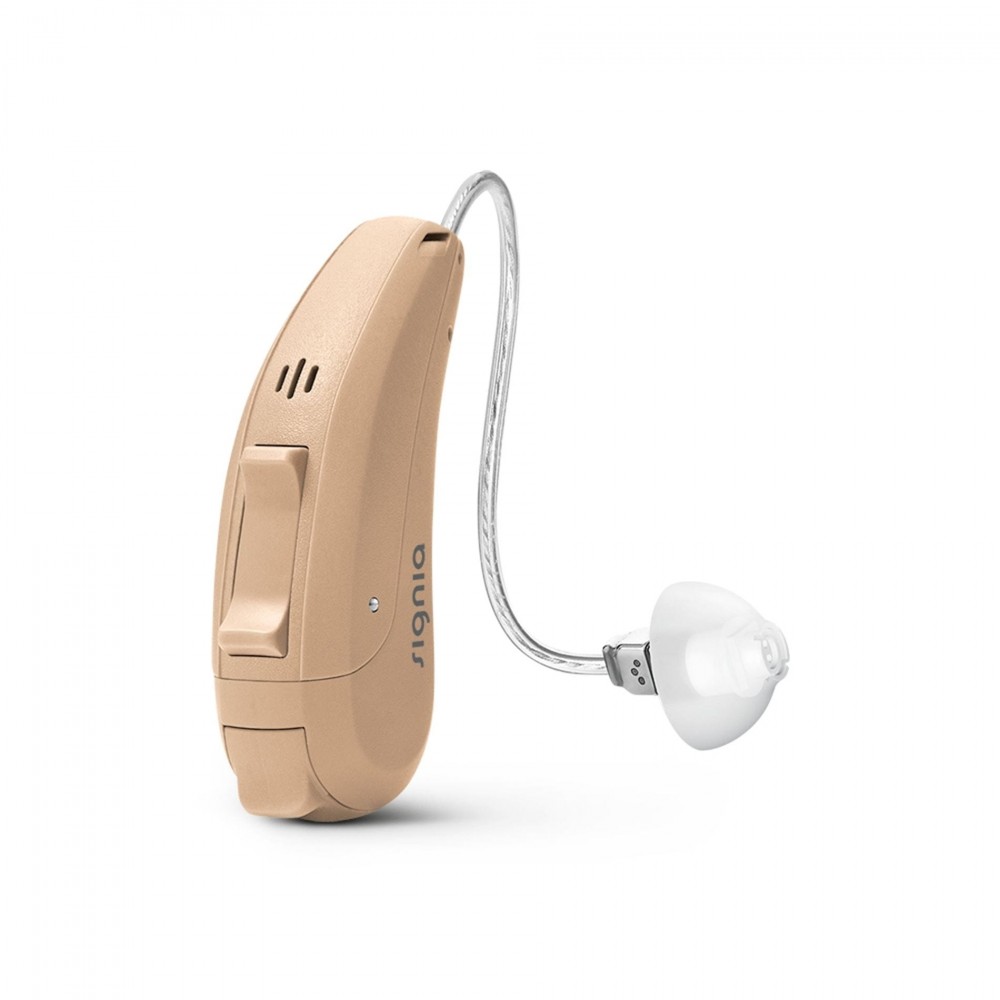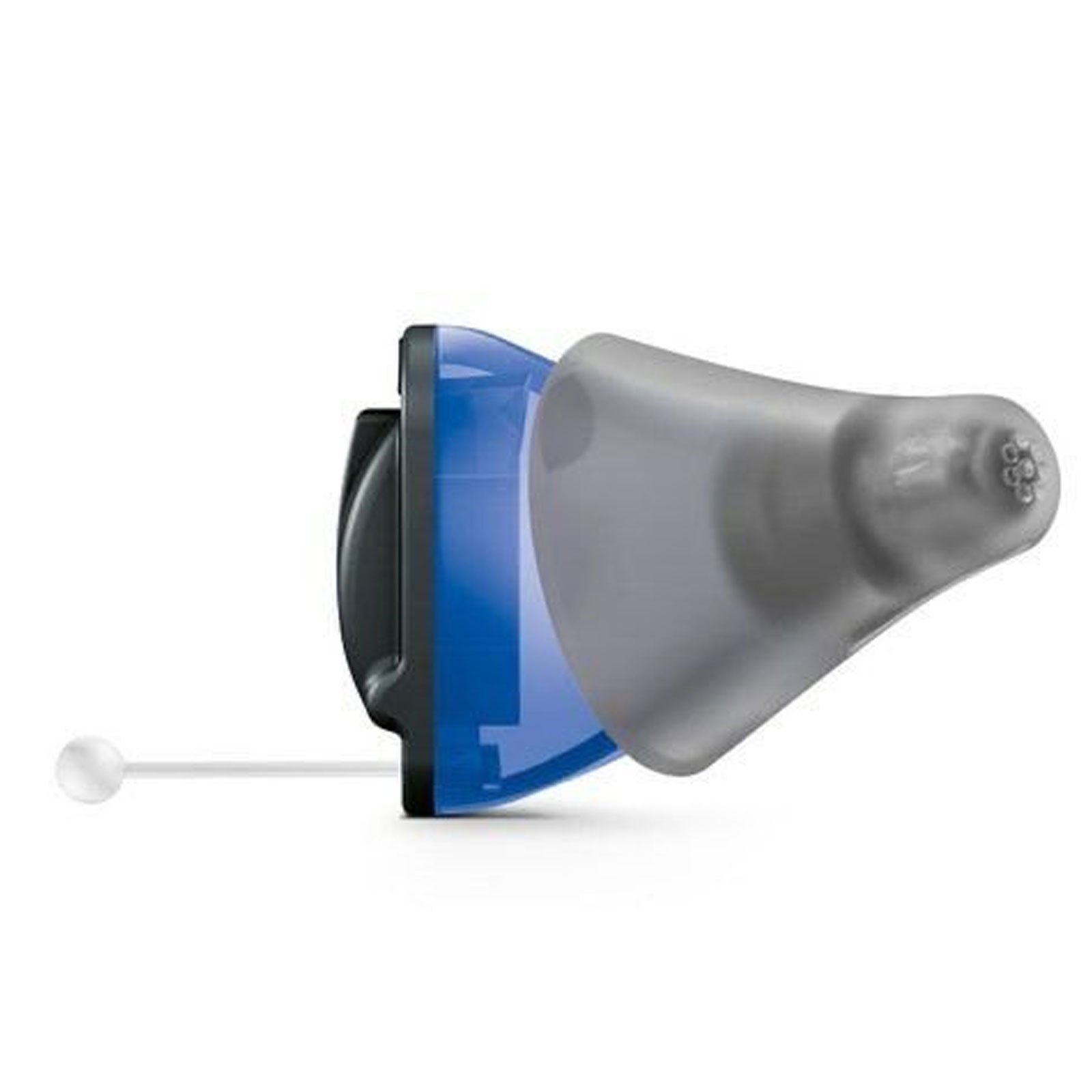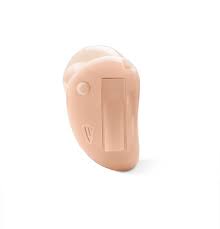Key Takeaways: RIC vs CIC Hearing Aids
| Feature | RIC Hearing Aids | CIC Hearing Aids |
|---|---|---|
| Design and Appearance | Sits discreetly behind the ear with a thin wire leading to the ear canal. | Fits completely inside the ear canal, making it nearly invisible. |
| Sound Quality | Provides natural sound quality with advanced features like directional microphones and noise reduction. | Offers good sound isolation due to placement but may lack advanced features. |
| Comfort and Fit | Lightweight and comfortable; suitable for various ear shapes. | Custom-molded for a snug fit but may feel less comfortable during extended use. |
| Battery Life | Longer battery life with rechargeable options available (e.g., Signia Pure Charge & Go 7X). | Shorter battery life due to smaller size; fewer rechargeable options (e.g., Signia Silk 3X). |
| Maintenance | Easier to clean as key components are external; may be prone to moisture damage. | Requires regular cleaning due to wax buildup; less prone to external damage. |
| Durability | Durable but exposed parts may require protection from sweat and moisture. | Compact and protected inside the ear canal but susceptible to internal moisture and wax buildup. |
| Discretion | Visible behind the ear, though modern designs are sleek and subtle. | Highly discreet, virtually invisible when worn. |
| Suitability for Hearing Loss | Suitable for mild to severe hearing loss (e.g., Signia Pure Charge & Go 5X). | Best for mild to moderate hearing loss (e.g., Signia Intuis 3 Click CIC). |
| Lifestyle Compatibility | Ideal for active lifestyles due to comfort and durability (e.g., Signia Pure Charge & Go 2X). | Best suited for quieter environments or users prioritizing discretion (e.g., Signia Silk 1X). |
| Cost Range | Generally higher due to advanced features and rechargeable options. | More affordable options available, though high-end models can be expensive. |
This table summarizes the key differences between RIC (Receiver-in-Canal) and CIC (Completely-in-Canal) hearing aids, helping users make an informed decision based on their needs, preferences, and lifestyle.
RIC vs CIC Hearing Aids: Which Style is Right for You?
Choosing the right hearing aid can feel overwhelming with so many options available. Two of the most popular styles are RIC (Receiver-in-Canal) and CIC (Completely-in-Canal) hearing aids. Both offer unique benefits, but they cater to different needs and preferences. In this blog, we’ll break down the key differences, advantages, and factors to consider when choosing between these two styles.
What Are RIC and CIC Hearing Aids?
Receiver-in-Canal (RIC) Hearing Aids
RIC hearing aids are designed with the receiver (speaker) placed directly in the ear canal, connected to the main body by a thin wire. This design provides a more open fit, making it ideal for individuals who value natural sound quality and comfort.
Here’s an example of a popular RIC hearing aid:
Signia Intuis 3 RIC 312 Essential Hearing Aid
Check Price: ₹25,990
Completely-in-Canal (CIC) Hearing Aids
CIC hearing aids are custom-molded to fit entirely inside your ear canal. They are nearly invisible when worn, making them a great choice for users who prioritize discretion. Due to their compact size, CIC aids are perfect for those who prefer minimal visibility.
Check out this example of a CIC hearing aid:
Signia Prompt Click CIC Basic Hearing Aid
Check Price: ₹19,490
Key Differences Between RIC and CIC Hearing Aids
Design and Appearance
RIC hearing aids are lightweight and sit discreetly behind the ear with a thin wire extending into the ear canal. While they are not entirely invisible, their sleek design ensures they remain subtle.
On the other hand, CIC hearing aids fit completely inside the ear canal and are virtually invisible. This makes them an excellent choice for users who want their hearing aids to go unnoticed.
Sound Quality
RIC models often deliver superior sound quality due to their larger size, which allows for advanced features like directional microphones and better noise reduction. They also provide a more natural listening experience because of their open-fit design.
CIC hearing aids, while compact, may have limited features due to their smaller size. However, their placement deep inside the ear canal helps reduce wind noise and provides excellent sound isolation.
Comfort and Fit
RIC hearing aids offer a comfortable fit for most users as they don’t block the entire ear canal. They are particularly suitable for individuals with mild to severe hearing loss.
CIC hearing aids are custom-molded to fit snugly inside your ear canal. While this ensures a secure fit, some users may find them less comfortable during extended use due to their deep placement.
Stay tuned for more insights into battery life, maintenance needs, and which style suits your lifestyle best in the next sections of this blog!
Battery Life of RIC and CIC Hearing Aids
RIC Hearing Aids
RIC hearing aids generally offer longer battery life compared to CIC models. This is because their slightly larger size allows for the use of bigger batteries or rechargeable options, which can last longer. Many modern RIC hearing aids come with rechargeable batteries, making them convenient and eco-friendly.
For example, the Signia Pure Charge & Go 7X Rechargeable RIC Xperience Hearing Aid is a great option for those looking for long-lasting power without the hassle of changing batteries frequently.
CIC Hearing Aids
CIC hearing aids, due to their compact size, use smaller batteries that typically have a shorter lifespan. However, advancements in technology have led to more energy-efficient designs. Some CIC models now also offer rechargeable options, though they are less common than in RIC hearing aids.
An example is the Signia Silk 3X CIC Xperience Hearing Aid, which balances compact design with efficient energy usage.
Maintenance and Durability
RIC Hearing Aids
RIC hearing aids are relatively easy to maintain. Since the receiver is located in the ear canal but connected to the main device outside the ear, cleaning and replacing parts like domes or receivers is straightforward. However, they may be more prone to moisture damage due to their partially exposed design.
For instance, the Signia Intuis 3 RIC 312 Essential Hearing Aid is known for its durable build and ease of maintenance.
CIC Hearing Aids
CIC hearing aids require regular cleaning as they sit entirely inside the ear canal, where they are exposed to earwax and moisture. While their snug fit protects them from external damage, this placement can make them more susceptible to wax buildup.
The Signia Prompt Custom CIC Basic Hearing Aid is a robust option for users who prioritize discreetness but are willing to maintain their device regularly.
Pros and Cons of RIC Hearing Aids
Advantages
- Lightweight and comfortable for extended wear.
- Ideal for mild to severe hearing loss.
- Rechargeable options available for convenience.
- Easier maintenance due to external placement of key components.
Disadvantages
- More visible than CIC hearing aids.
- May pick up wind noise in outdoor environments.
A great example of an advanced RIC hearing aid is the Signia Pure Charge & Go 5X Rechargeable RIC Xperience Hearing Aid, which offers excellent features and comfort.
In the next section of this blog, we’ll explore the pros and cons of CIC hearing aids and help you decide which style suits your lifestyle best!
Pros and Cons of CIC Hearing Aids
Advantages
- Discreet Design: CIC hearing aids are nearly invisible when worn, making them the most discreet option available.
- Wind Noise Reduction: Their placement deep inside the ear canal helps reduce wind noise, which is especially beneficial for outdoor use.
- Custom Fit: These devices are custom-molded to fit the unique shape of your ear canal, ensuring a snug and secure fit.
Disadvantages
- Limited Features: Due to their compact size, CIC hearing aids may lack advanced features like directional microphones or Bluetooth connectivity.
- Shorter Battery Life: They use smaller batteries, which typically need replacement more frequently than those in RIC models.
- Higher Maintenance: Sitting entirely inside the ear canal makes them more prone to wax buildup and moisture exposure, requiring regular cleaning.
For example, the Signia Intuis 3 Click CIC Essential Hearing Aid is a reliable option that combines discretion with performance.
Lifestyle Considerations
Active Lifestyles
If you lead an active lifestyle or spend a lot of time outdoors, RIC hearing aids may be a better choice. Their open-fit design ensures comfort during physical activities, and they are less prone to damage from sweat or moisture. For example, the Signia Pure Charge & Go 2X Rechargeable RIC Xperience Hearing Aid is a durable and convenient option for active users.
On the other hand, CIC hearing aids are better suited for individuals who prioritize discretion and spend most of their time in quieter environments.
Severity of Hearing Loss
RIC hearing aids are versatile and can accommodate a wide range of hearing loss levels, from mild to severe. Their larger size allows for more powerful amplification and additional features.
CIC hearing aids are typically recommended for mild to moderate hearing loss. Their compact design limits their ability to handle severe hearing loss effectively.
User Preferences
Your personal preferences play a significant role in deciding between RIC and CIC hearing aids. If you value advanced features like Bluetooth connectivity or rechargeable batteries, RIC models might be the better choice. For instance, the Signia Kit Pure Charge & Go 5X Rechargeable RIC Xperience Hearing Aid offers cutting-edge technology in a sleek design.
If you prefer a nearly invisible device that blends seamlessly with your daily life, CIC models like the Signia Silk 1X CIC Xperience Hearing Aid could be ideal.
How to Choose Between RIC and CIC Hearing Aids
Consult an Audiologist
The best way to determine which style is right for you is by consulting an audiologist. They will assess your hearing needs, lifestyle preferences, and budget to recommend the most suitable option.
Try Before You Buy
Many manufacturers offer trial periods for their hearing aids. Take advantage of these trials to test both RIC and CIC models in real-life situations before making a final decision.
Consider Long-Term Needs
Think about your long-term requirements. If your hearing loss is likely to progress over time, RIC hearing aids may offer more flexibility with adjustments and upgrades. Additionally, consider ease of maintenance and battery replacement when making your choice.
Conclusion
Both RIC and CIC hearing aids have their unique advantages and limitations. RIC models excel in sound quality, advanced features, and versatility for different levels of hearing loss. On the other hand, CIC models stand out for their discreet design and custom fit.
Ultimately, the right choice depends on your individual needs and preferences. Take the time to consult an audiologist and explore different options before making your decision. With the right hearing aid, you can enjoy improved sound quality and a better quality of life!
Ready to take the next step? Check out our wide range of RIC Hearing Aids or CIC Hearing Aids today!
Read More
- Strom, Karl E. “‘Hearing review’survey of RIC pricing in 2017.” Hearing Review 25.3 (2018): 28-38.
- Know, Hearing Aid. “Oticon Hearing Aids.” (2019).






